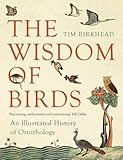
Bloomsbury 2008 x, 433 p. ,
<DIV>What the birds have taught us: a gorgeously rendered and comprehensive history of ornithology, from folklore to facts—the perfect gift for bird enthusiasts everywhere. Leading ornithologist Tim Birkhead takes readers on a journey through the wonderful world of birds: conception and egg, territory and song, breeding and migration. In the process, he reveals how birders have overcome centuries-old superstitions and untested truths to achieve a firmer understanding of birds. He also details when and how this knowledge was first acquired, detailing the various myths and misconceptions that were believed to be true throughout the ages and when they were finally corrected. Conceived for a general audience, and illustrated throughout with more than one hundred exquisitely beautiful illustrations, many of them rarely if ever seen before, The Wisdom of Birds is a book full of stories, knowledge, and unexpected revelations. Engaging and accessible, it is an illustrated history of birds—and all they have taught us.</DIV>

Public Interest Publishing 2010 271 p. ,

Craig Potton Pub. 2006 232 p. ,

Text Pub. 2011 246 p., [8] p. of plates ,
A fabulous account of hunting, trapping and recording mammal species in the Pacific Islands. Twenty-five years ago, a zoologist from the Australian Museum in Sydney set off to research the mammals of the Pacific Islands. Starting with a survey of one of the most inaccessible islands in Melanesia that young scientist found himself ghost-whispering, snake wrestling, quadoi hunting and plunging waist-deep into a sludge of maggot-infested faeces in search of a small bat that turned out not to be earth-shatteringly interesting. Now one of Australias greatest scientists, Tim Flannery looks back on his ground-breaking fieldwork. With accounts of discovering, naming and sometimes eating animal species new to science, and stories of historic expeditions and colourful local customs, he takes us on an enthralling journey through some of the most diverse and spectacular environments on Earth.

Collins 2010 p. cm ,
The epic story of the beginning of life on Earth from the much loved and respected naturalist, writer and broadcaster, Sir David Attenborough.Spanning billions of years, First Life reveals the extraordinary story of the evolution of the first life on Earth and how it then evolved into multicellular life, the first plant, the first animal, the first predator, the first to live on land: key moments in the development of the huge diversity of life that has lived on planet Earth. First Life travels the world, from Canada to Australia, Morocco to Scotland, to unearth the secrets hidden in prehistoric fossils and meet the palaeontologists who have harnessed new techniques to enhance greatly our understanding of the origins of life.With an introduction by David Attenborough, and insights captured during the making of the television series, this book is a journey of discovery, showing us what these early animals would have looked like and how they would have lived, bringing them to life with the help of modern computer technology. First Life shows us how evolutionary features of the first creatures have been passed down to modern animals, including humans, giving us amazing insight into the remarkable evolutionary journey that has brought us here today.

Sidgwick and Jackson 1978 296 p. ,
At the end of the seventeenth century, the Dodo of Mauritius, a large flightless bird with a permanently dishevelled appearance, became extinct. This was the first recorded extinction of a bird species, and since then about 130 species and races of birds have become 'as dead as a Dodo' while many others are now critically rare. Extinction is a natural part of the evolutionary process, but the primary cause of the great majority of extinctions in the last three hundred years has been man, through his direct and indirect influences on wildlife. The history of man's relationship with his fellow creatures is a melancholy one, but this book adopts a constructive approach to the problem. Dr Halliday examines the ways in which birds have evolved, so as to identify what it is about same species that makes them particularly vulnerable to changes in their environment, and thus tragically susceptible to human influences. The histories of several extinct species, including the Dodo, the Great Auk and the Passenger Pigeon are discussed in detail, with the aim of establishing general principles that can be of help in the conservation of endangered species. The author's primary interest in birds is as an artist, and he has illustrated his text with fine colour plates and line drawings.
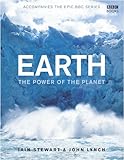
BBC 2007 240 p. ,
In this lavish companion to the BBC series "Earth: The Power of the Planet", renowned science writers Iain Stewart and John Lynch use stunning imagery and the latest scientific discoveries to explain how our remarkable planet functions. Earth has survived four and a half billion years of being 'stirred from below and bombarded from above' but at the start of the twenty-first century our planet faces new threats, brought about by human actions. It is the perfect time to look back on an extraordinary life and give Earth a thorough health-check. Each chapter focuses on one of Earth's most powerful forces - meteor impacts, plate tectonics, the ocean, atmosphere and ice - and explores their central role in keeping Earth alive.These are the forces that drive our planet and shape its destiny. We discover how a devastating cosmic impact blasted a huge chunk of Earth into space to form the Moon, how Earth nearly froze to death when it was completely encased in ice for millions of years, and how Earth's remarkable heat engine, its molten core, saved the day. Earth has been able to sustain complex life thanks to an extraordinary number of lucky breaks and coincidences. Scientists predict that one day it will die as the Sun heats up and expands. But are we hastening its end through our actions? This lavishly illustrated book will tell the epic story of the birth, life and future of our amazing planet.

Bloomsbury 2008 x, 433 p. ,
<DIV>What the birds have taught us: a gorgeously rendered and comprehensive history of ornithology, from folklore to facts—the perfect gift for bird enthusiasts everywhere. Leading ornithologist Tim Birkhead takes readers on a journey through the wonderful world of birds: conception and egg, territory and song, breeding and migration. In the process, he reveals how birders have overcome centuries-old superstitions and untested truths to achieve a firmer understanding of birds. He also details when and how this knowledge was first acquired, detailing the various myths and misconceptions that were believed to be true throughout the ages and when they were finally corrected. Conceived for a general audience, and illustrated throughout with more than one hundred exquisitely beautiful illustrations, many of them rarely if ever seen before, The Wisdom of Birds is a book full of stories, knowledge, and unexpected revelations. Engaging and accessible, it is an illustrated history of birds—and all they have taught us.</DIV>
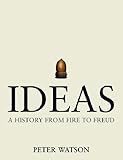
Weidenfeld & Nicolson 2005 xix, 822 p. ,
In this hugely ambitious and exciting book Peter Watson tells the history of ideas from prehistory to the present day, seeking a new way to tell the history of the world. The book begins over a million years ago with a discussion of how the earliest ideas might have originated. Looking at animal behaviour that appears to require some thought - tool-making, territoriality, counting, language (or at least sounds), pairbonding - Peter Watson moves on to the apeman and the development of simple ideas such as cooking, the earliest language, the emergence of family life. All the obvious areas will be tackled - the Ancient Greeks, Christian theology, the ideas of Jesus, astrological thought, the soul, the self, beliefs about the heavens, the ideas of Islam, the Crusades, humanism, the Renaissance, Gutenberg and the book, the scientific revolution, the age of discovery, Shakespeare, the idea of Revolution, the Romantic imagination, Darwin, imperialism, modernism, Freud right up to the present day and the internet. IDEAS: A HISTORY will concentrate on the activities and achievements of philosophers, writers, artists, scientists, inventors, religious thinkers, poets, historians, jurists and dramatists, investigating how their ideas have shaped our lives and thinking.

BBC 2000 216 p. ,
Andes to America: A Guide to Wild South America is the first book to journey through the main ecosystems of this relatively unknown continent. With an astonishing variety of wildlife and spectacular landscapes, South America has the planet's greatest river system, its longest mountain chain and its driest desert.Author Michael Bright's tour of this land of extremes takes us from the glacial peaks of the massive Andes to the vast Amazonian Basin, south across the endangered cerrado grasslands of Brazil to the windswept Patagonian steppe and finally around the wild west of Chile. Among the wildlife specialities are fish that leap out of the water to breed, antelope-sized rodents that wallow in mud, tiny marsupials that live in bamboo thickets and cactus-nesting penguins.South America has recently become one of the fastest-growing tourist destinations in the world. A comprehensive gazetteer offers a selection of key wildlife locations, with suggestions of where to stay, how to get there and when to go.With stunning pictures by some of the word's best wildlife photographers and unique aerial shots take by aviator cameraman Bob Fulton, Andes to Amazon provides inspiration for both the armchair traveller and the would-be explorer.

Te Papa Press 2006 v, 180 p. ,
In New Zealand’s lush rainforests, isolated from the outside world for 80 million years, many extraordinary birds evolved. They included the giant moa, the beautiful huia, and the largest eagle the earth has ever seen. Within a few hundred years, human settlement extinguished 58 species – over a quarter of the species.For the first time ever, this book brings all these lost birds to life. In rich colour, celebrated painter Paul Martinson depicts each bird in its original habitat. Te Papa palaeontologist Alan Tennyson provides detailed information on the birds as well as a compelling overview of their tragic extinction.This book is essential reading for experts, students, and anyone interested in this country’s natural history.Paintings of fifty-eight species of extinct New Zealand birds including the largest eagle the earth has ever seen with text on facing pages.

Heritage Expeditions 2009 224 p. ,
Describes the seven oceanic islands groups to the south of New Zealand. Starting at the Chatham Islands, and moving east to west through the Bounty Islands, Antipodes Islands, Campbell Island, Auckland Island, The Snares and Macquarie Island, this book takes the reader on a journey through a unique part of the world, a wonderland of wildlife, unique geology and rich history.

Craig Potton Pub. 2010 215 p. ,
The kakapo is one of New Zealand's most charismatic yet mysterious birds. It is also one of the world's most threatened species and a New Zealand conservation success story. An ancient, flightless, nocturnal, herbivorous giant parrot, the kakapo was once numerous throughout the country but is now extinct in its natural range. At its low point, the population was reduced to as few as 40 known individuals, but thanks to the hard work and innovation of the Kakapo Recovery Programme, New Zealand's fl agship threatened-species conservation programme, the kakapo population now exceeds 120. Despite this exciting turnaround, there has not been a significant book on the kakapo since 1989. The story of this remarkable bird embraces science, conservation, ingenuity and personal dedication. Through an informative and entertaining mix of hard facts, history, and accounts of the daily and seasonal routines of kakapo and their minders, Alison Ballance brings together these threads to describe the natural history of the bird and tell the inspiring story of the Kakapo Recovery Programme. Illustrated throughout and with an appendix giving details of all known kakapo, this book will appeal to anyone with an interest in the natural world of New Zealand.

Craig Potton Publishing 2005 314 p. ,
There has always been interest in how animals live their lives — it is easy for us to identify with them. But there are many remarkable stories about plants that deserve to be told. The Nature of Plants tells how plants adapt to the challenges of their habitats. Plants may live in places that provide too little rainfall, yet they thrive, either by evading drought, like the animals that live in deserts, or by tolerating the scarcity. There are plants that use other plants, climbing on them, strangling some, living in their leafy canopies, or parasitizing them. And The Nature of Plants explores the love-hate relationships that plants have with animals, some feeding on plants but others drawn into serving plants by pollinating them, scattering their fruits and seeds, or being eaten themselves. The mostly hidden associations that plants have with bacteria and fungi are also revealed. Illustrated throughout with superb color photographs, it is written in a way that is clear to anyone who wishes to understand the life of plants.

Canterbury University Press 2003 240 p. ,
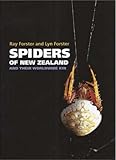
University of Otago Press, in association with Ota 1999 vi, 270 p. ,
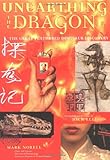
Pi Press 2005 254 p. ,

Random House New Zealand 2002 320 p. ,

Hodder & Stoughton 1992 199 p. ,